
0830 00830现代语言学自考教材何兆熊1999年版外研社
¥ 13 8.2折 ¥ 15.9 全新
库存87件
作者何兆熊 梅德明
出版社外语与教学研究出版社
ISBN9787300028200
出版时间1999
版次1
装帧平装
开本12开
定价15.9元
上书时间2016-02-26
- 在售商品 暂无
- 平均发货时间 15小时
- 好评率 暂无
- 店主推荐
- 最新上架
商品详情
- 品相描述:全新
- 商品描述
-
基本信息 1
书 名
全国高等教育自学考试指定教材 0830 00830现代语言学 何兆熊1999年版
主 编
何兆熊 梅德明
出版社
外语与教学研究出版社
出版时间
1999年12月
版 次
第1版
印刷时间
1999年12月
印 次
第1次印刷
字 数
千字
页 数
页
I S B N
9787300028200
开 本
32开
装 帧
平装
重 量
克
原 价
15.9元
折后价
目录
Chapter 1 Introduction
1. What is linguistics?
1.1 Definition
1.2 The scope of linguistics
1.3 Some important distinctions in linguistics
1.3.1 Prescriptive vs. descriptive
1.3.2 Synchronic vs. diachronic
1.3.3 Speech and writing
1.3.4 Langue and parole
1.3.5 Competence and performance
2. What is language?
2.1 Definitions of language
2.2 Design features
Study questions
Chapter 2 Phonology
1. The phonic medium of language
2. Phonetics
2.1 What is phonetics?
2.2 Organs of speech
2.3 Orthographic representation of speech sounds—broad and narrow transcriptions
2.4 Classification of English speech sounds
2.4.1 Classification of English consonants
2.4.2 Classification of English vowels
3. Phonology
3.1 Phonology and phonetics
3.2 Phone, phoneme, and allophone
3.3 Phonemic contrast, complementary distribution, and minimal pair
3.4 Some rules in phonology
3.4.1 Sequential rules
3.4.2 Assimilation rules
3.4.3 Deletion rule
3.5 Suprasegmental features—stress, tone, intonation
3.5.1 Stress
3.5.2 Tone
3.5.3 Intonation
Study questions
Chapter 3 Morphology
1. Definition
2. Morpheme
2.1 Morpheme: the smallest meaningful unit of language
2.2 Types of morphemes
2.2.1 Free morphemes
2.2.2 Bound morphemes
2.2.3 Morphological rules
3. Compounding
3.1 Types of compound words
3.2 Features of compounds
Study questions
Chapter 4 Syntax
1.Syntax as a system of rules
2. Sentence structure
2.1 The basic components of a sentence
2.2 Types of sentences
2.2.1 The simple sentence
2.2.2 The coordinate sentence
2.2.3 The complex sentence
2.3 The linear and hierarchical structures of sentences
2.3.1 The linear word order of a sentence
2.3.2 The hierarchical structure of a sentence
2.3.3 Tree diagrams of sentence structure
3. Syntactic categories
3.1 Lexical categories
3.2 Phrasal categories
4. Grammatical relations
5. Combinational rules
5.1 Phrase structure rules
5.2 The recursiveness of phrase structure rules
5.3 X-bar theory
6. Syntactic movement and movement rules
6.1 NP- movement and WH- movement
6.2 Other types of movement
6.3 D-structure and S-structure
6.4 Move α—a general movement rule
7. Toward a theory of universal grammar
7.1 General principles of Universal Grammar
7.2 The parameters of Universal Grammar
Study questions
Chapter 5 Semantics
1. What is semantics?
2. Some views concerning the study of meaning
2.1 The naming theory
2.2 The conceptualist view
2.3 Contextualism
2.4 Behaviorism
3. Lexical meaning
3.1 Sense and reference
3.2 Major sense relations
3.2.1 Synonymy
3.2.2 Polysemy
3.2.3 Homonymy
3.2.4 Hyponymy
3.2.5 Antonymy
4. Sense relations between sentences
5. Analysis of meaning
5.1 Componential analysis—a way to analyze lexical meaning
5.2 Predication analysis—a way to analyze sentence meaning
Study questions
Chapter 6 Pragmatics
1. What is pragmatics?
1.1 Definition
1.2 Pragmatics vs. semantics
1.3 Context
1.4 Sentence meaning vs. utterance meaning
2. Speech act theory
3. Principle of conversation
Study questions
Chapter 7 Historical Linguistics
1. The purpose and significance of the historical study of language
2. The nature of language change
3. The historical development of English
3.1 Major periods in the history of English
3.1.1 Old English
3.1.2 Middle English
3.1.3 Modern English
3.2 linguistic change of English
3.2.1 Sound change
3.2.2 Morphological change
3.2.3 Syntactic change
3.2.4 Lexical change
3.2.5 Semantic change
4. Language family
4.1 Classifying genetically related languages
4.2 The Indo-English language family
5. The causes of language change
5.1 Sound assimilation
5.2 Rule simplification and regularization
5.3 Internal borrowing
5.4 Elaboration
5.5 Sociological triggers
5.6 Cultural transmission
5.7 Children’s approximation toward the adult grammar
Study questions
Chapter 8 Sociolinguistics
1. Language variation
1.1 Speech community
1.2 Speech variety
1.3 Regional variation
1.4 Social variation
1.5 Stylistic variation
1.6 Idiolectal variation
2. Standard and nonstandard language
2.1 Standard and nonstandard language
2.2 Lingua francas
2.3 Pidgins
2.4 Creoles
3. Diglossia and bilingualism
3.1 Diglossia
3.2 Bilingualism
4. Ethnic dialect
4.1 Black English, a case study of ethnic dialect
4.2 The social environment of Black English
5. Social dialect
5.1 Education varieties
5.2 Age varieties
5.3 Gender varieties
5.4 Register varieties
5.5 Address terms
5.6 Slang
5.7 Linguistic taboo
5.8 Euphemism
Study questions
Chapter 9 Psycholinguistics
1. The biological foundations of language
1.1 The case of Phineas Gage
1.2 The human brain
1.3 Brain lateralization
2. Linguistic lateralization
2.1 Left hemispheric dominance for language
2.2 Dichotic listening research
3. The language centers
3.1 Broca’s area
3.2 Wernicke’s area
3.3 The angular gyrus
3.4 Language perception, comprehension and production
4. The critical period for language acquisition
4.1 The critical period hypothesis
4.2 The case of Genie and the degeneration of language faculty with age
5. Language and thought
5.1 Early views on language and thought
5.2 The Sapir-Whorf hypothesis
5.3 Arguments against the Sapir-Whorf hypothesis
5.3.1 Words and meaning
5.3.2 Grammatical structure
5.3.3 Translation
5.3.4 Second language acquisition
5.3.5 Language and world views
5.4 Understanding the relation of language and thought
5.4.1 Major functions of language
5.4.2 The development and blending of language
5.4.3 Thinking without language
5.4.4 Language as a conventional coding system to express thought
5.4.5 The ways in which language affects thought
Study questions
Chapter 10 Language Acquisition
1. First language acquisition
1.1 The biological basis of language acquisition
1.2 Language acquisition as the acquisition of grammatical rules
1.3 The role of input and interaction
1.4 The role of instruction
1.5 The role of correction and reinforcement
1.6 The role of imitation
2. Stages of first language acquisition
2.1 The prelinguistic stage
2.2 The one-word stage
2.3 The two-word stage
2.4 The multiword stage
3. The development of the grammatical system
3.1 The development of phonology
3.2 The development of syntax
3.3 The development of morphology
3.4 The development of vocabulary and semantics
4. Second language acquisition
4.1 Acquisition vs. learning
4.2 Transfer and interference
4.3 Error Analysis and the natural route of SLA development
4.4 Interlanguage and fossilization
4.5 The role of input
4.6 The role of formal instruction
4.7 Individual learner factors
4.7.1 The optimum age for second language acquisition
4.7.2 Motivation
4.7.3 Acculturation
4.7.4 Personality
Study questions
Suggested Answers to Study Questions
An English-Chinese Glossary
后记
现代语言学自学考试大纲
相关推荐
-

现代语言学.代码00830
全新南昌
¥ 20.00
-

自考教材 00830现代语言学 13165自学考试教材 0830何兆熊 外研社 试卷
全新广州
¥ 24.00
-

自考教材 00830现代语言学 13165自学考试教材 0830何兆熊 外研社 教材
全新广州
¥ 26.00
-

自考通试卷00830 0830现代语言学模拟及历年真题试卷附串讲
全新无锡
¥ 9.00
-

现代语言学(00830)1999年版
九五品成都
¥ 4.90
-

现代语言学(00830)1999年版
九品北京
¥ 13.21
-

现代语言学(00830)1999年版
九五品廊坊
¥ 16.79
-

现代语言学(00830)1999年版
九品北京
¥ 8.46
-

现代语言学(00830)1999年版
九品北京
¥ 13.14
-

现代语言学(00830)1999年版
九品北京
¥ 11.82
— 没有更多了 —



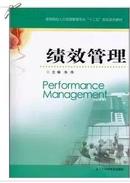




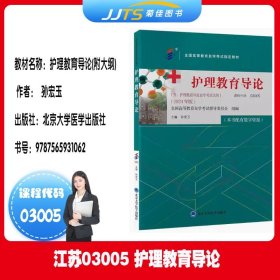

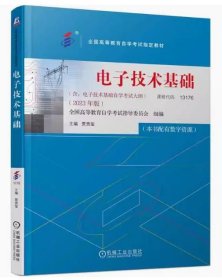

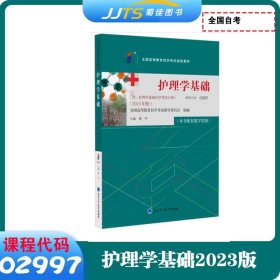



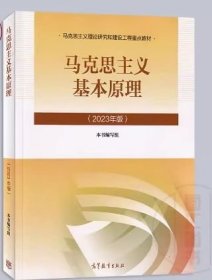



以下为对购买帮助不大的评价